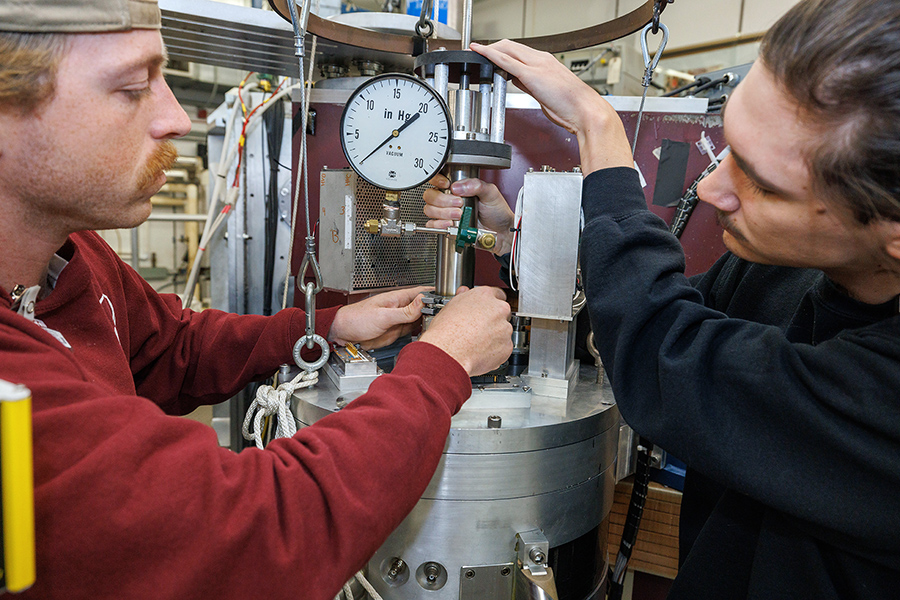The UA Little Rock Center for Arkansas History and Culture (CAHC) will lead the project, “Mapping Urban Fracture: Charting the Context and Consequence of the Little Rock Central High Crisis Project.” The center’s director, Dr. Deborah Baldwin, associate provost of collections and archives, will serve as the principal investigator for the three-year project that begins June 1.
CAHC received a $50,000 grant from the National Endowment for the Humanities in 2018 for an 18-month pilot project of the map that brought together humanities scholars and technical specialists to select, digitize, describe, and create a website making the resources available to the public. A prototype of the project can be found on the CAHC website.
The Mapping Urban Fracture project will create a virtual collection comprising approximately 700 new reports and maps created after 1989 and develop an access interface to research spatial segregation with meta and geospatial data. The website includes the digitization and geolocation of maps, architectural drawings, reports, and related photographs to address humanities issues and questions.
The project will create an aggregated collection of digital products that track the history of Little Rock through patterns of residential segregation, urban renewal, public school desegregation plans, and local elections and governance. While scholars will generate sample narratives to interpret the virtual collection, members of the public, particularly teachers and students, can find and create their own stories through the data.
“One of the reasons we wanted to complete this project is to make our collections more accessible to a wide variety of people, and we believed integrating them into a multilayered map on a website would do that,” Baldwin said. “It is an opportunity for the university to pull together expertise in many different areas and focus them on a project that can inspire a lot of conversation about the development of this city.”
The NEH awarded $24 million in grants for 225 humanities projects across the country. UA Little Rock was one of only two projects in the state selected for a 2021 grant from the National Endowment for the Humanities.
“NEH is proud to support these 225 new projects, which embody excellence, intellectual rigor, and a dedication to the pursuit of knowledge, even as our nation and the humanities community continue to face the challenges of the pandemic,” said NEH Acting Chairman Adam Wolfson. “We look forward to the contributions these projects will make to our understanding of ourselves and our society through exemplary humanities research, publications, documentary films, exhibitions, and undergraduate programs.”
The Mapping Urban Fracture project will allow the CAHC to place collections from various institutions together in a single, searchable database so that users can interact with digitized and described materials both spatially and visually. The project combines geographic, print, architectural, photographic, census, and election data to provide a complex portrait of the effects of government, politics, and growth on the urban environment.
In the 1960s, urban renewal in central Little Rock comprised one of the largest demolition and clearance programs in the country. As a result of renewal efforts, Little Rock’s Central High district shifted from being a majority-white to a predominantly African-American neighborhood. The Ninth Street Corridor, the city’s African-American business district, was cleared of its inhabitants and businesses to make way for freeway construction.
The Mapping Urban Fracture project will not only digitize important historic materials from this period and make them freely available online, it also will develop methods that can be used nationally for describing place-based materials in ways that others can easily find. Because this project includes many maps and architectural drawings, the team will attach geospatial data to the digital files so that computers and Geographic Information Systems can be used for analysis.
Focus groups with local educators as well as a teacher advisory group will ensure the project interface is accessible to both teachers and students. The project will also increase community engagement and civic discourse by providing the local community with access to resources and information about spatial segregation, the effects of past urban renewal initiatives, and the evolution of school desegregation.
“There are many mapping projects around the country right now,” said Laura McClellan, assistant director of the Center for Arkansas History and Culture. “There is a trend to use data in a visual way, and we feel like expressing data in a visual way with all these different kinds of collaborators brings a richness to the discussion of the history of Little Rock that ordinarily we couldn’t have. This is a way to connect with multiple collaborators with a new way of discussing the information that also follows national trends. We are cutting edge.”
CAHC personnel and partners hope to make presentations on this “cutting edge project” at the Society of American Archivists, the Arkansas Historical Association, the Society of Southwest Archivists, and the University of San Diego’s Digital Initiatives Symposium.
A variety of UA Little Rock departments will collaborate in the creation of the project, including the CRUX Lab, the Arkansas Institute for Economic Advancement, the Department of History, and IT Services.
“This is a very collaborative project that pulls together people who are interested in the humanities,” Baldwin said. “The enjoyable part of this project is gathering a wide variety of people who don’t always work together.”



